HESI LPN Fundamentals Practice Exam - Answered with Rationales
Document Content and Description Below
HESI LPN Fundamentals Practice Exam - Answered with Rationales Which food should the practical nurse (PN) recommend for a client to increase the dietary intake of potassium? A. Corn. B. Baked potato.... C. Popcorn. D. Grape juice. A baked potato, including its skin, contains the highest amount of potassium. (A, C, and D) are low in potassium. A male Native American client with tuberculosis is visiting a health care clinic for follow-up treatment. During the interview, the practical nurse (PN) notices that the client keeps his eyes on the floor and does not make eye contact. How should the PN interpret this client's behavior? A. He is uncomfortable with violation of his personal space. B. The client is depressed and concerned about his diagnosis. C. His culture finds sustained eye contact rude or disrespectful. D. The client is reluctant to speak without a tribal shaman present. Native Americans usually avoid sustained eye contact as a sign of respect (A) is common in Asian cultures. The client may be depressed or worried (B), but more data is needed. Reluctance to speak (D) is not supported by the client's nonverbal behavior. The practical nurse (PN) observes a client who begins to choke during a meal. After determining that the client cannot speak, what action should the PN implement? A. Initiate cardiopulmonary resuscitation (CPR). B. Administer four upward abdominal thrusts. C. Sweep the airway with a hooked index finger. D. Place a fist halfway between the xiphoid process and umbilicus. After confirming a victim with foreign body airway obstruction (FBAO) cannot speak, the first should be placed between the xiphoid process and umbilicus, and a rapid sequence of abdominal thrusts should be administered until the FBAO is relieved, not (B and C). If the victim becomes unresponsive, CPR (A) should be initiated after activating EMS. An older male client who is incontinent receives a prescription for a condom (external) catheter. Which step(s) should the practical nurse implement when applying the external catheter? (Select all that apply.) A. Wrap the adhesive strip in a spiral around the penis. B. Shave the perineal area before beginning. C. Apply skin prep to the penile shaft and allow to dry. D. Leave 1 to 2 inches between the tip of the penis and condom catheter. E. Don sterile gloves prior to application of the condom catheter. Spiral application of the adhesive strip (A) minimizes the risk of constricting blood flow to the penis. A skin prep to the skin of the penile shaft (C) ensures condom adhesion to the skin surface and prevents leakage. Adequate space between the tip of the penis and the end of the condom catheter (D) allows urine to drain. An older female states that the medication tablet brought in a cup looks different from the tablet that she takes at home. Which action should the practical nurse (PN) take? A. Double check the medication with the charge nurse. B. Give the medication because the client is confused. C. Check the written prescription to verify the medication. D. Reassure the client that this medication is correct The first line of defense against medication errors is verification of the healthcare provider's prescription, which should be reviewed when a client raises a concern. While taking an adult's vital signs, the practical nurse (PN) notes an irregular radial pulse. What action should the PN implement to obtain the most accurate assessment? A. Use a Doppler for the radial pulse while monitoring the apical. B. Obtain the radial pulse again for one minute followed by the apical. C. Perform an apical-radial pulse assessment with another nurse. D. Verify the finding by counting the apical pulse using a stethoscope. An apical-radial pulse provides the most objective comparison when one nurse obtains the radial pulse and another nurse simultaneously auscultates the apical pulse. When one nurse collects both rates, either at the same or separate times (A, B, and D), the data obtained is less accurate. Which interventions should the practical nurse (PN) implement to reduce the incidence of urinary tract infections in a client with an indwelling catheter? A. Irrigate the catheter with sterile distilled water. B. Dilute an antiseptic solution in the perineal wash. C. Cleanse perineum area with soap and water BID and PRN. D. Apply an antibiotic ointment around the urinary meatus BID. Daily perineal care BID and PRN should include cleansing of the meatus and catheter junction with soap and water. (A, B, and D) do not support the concept of medical asepsis and catheter care. An older client who is admitted to the hospital with dehydration and electrolyte imbalance is confused and incontinent of urine. Which action provides the best strategy for the practical nurse (PN) to implement for the client's incontinence? A. Insert an indwelling urinary catheter. B. Apply absorbent incontinence pads. C. Restrict fluids after the evening meal. D. Establish a 2-hour voiding schedule. A 2-hour voiding schedule is the best strategy for bladder incontinence management because it provides the client who is confused an opportunity to empty the bladder which minimizes incontinence due to overfilling. Restriction of fluids in the evening (C) is helpful for minimizing nighttime incontinence. Catheter insertion (A) increases the client's risk for infection and should be implemented for associated complications. Although the use of incontinent pads (B) assists with incontinent toileting, the client's episodes of incontinence may continue. The practical nurse (PN) identifies a client's need for spiritual support. What is the first action the PN should take? A. Refer the client to a client advocate or personal chaplain. B. Provide the client with religious literature and references. C. Suggest the client use one's religious faith to cope. D. Determine the client's perceptions and belief system. Exploring the client's spirituality may reveal responses to health problems that require nursing intervention. A client's perceptions and belief system should be determined, which may reveal a strong set of resources that enable the client to cope effectively. Once the client's value and belief systems are assessed, then (A, B and C) may be implemented to provide the client with spiritual support. A client is receiving a Mantoux test for tuberculosis screening. Which angle should the practical nurse (PN) insert the needle for injection? A. 15 degrees. B. 30 degrees. C. 45 degrees. D. 90 degrees. The Mantoux test is an intradermal (ID) injection, so the angle of needle insertion is 5 to 15 degrees, which deposits the antigen into the dermis. Depending upon the client's amount of adipose tissue, (B, C, and D) may place the medication into subcutaneous or intramuscular tissues, which does not provide the best results for ID testing. Which client group is most likely to experience a therapeutic response from therapeutic touch? A. Pregnant women. B. Premature infants. C. Clients with psychoses. D. Clients with headaches. Studies have found that therapeutic touch is most effective in reducing headache pain. Clients, such as pregnant women (A) and premature infants (B), who are sensitive to energy repatterning and may need to avoid therapeutic touch. Persons who are sensitive to human interaction and touch, such as victims of physically abused or psychotic disorders (C), may misinterpret the intent of the treatment and may feel threatened and anxious by the treatment. The practical nurse (PN) is obtaining the vital signs for a client who has a urinary tract infection with Methicillin-Resistant Staphylococcus Aureus (MRSA). How should the PN proceed? A. Wear exam gloves and use a disposable stethoscope. B. Wipe the stethoscope before removing it from the room. C. Don a gown and gloves before entering the room. D. Use a mask and gloves when entering the room. MRSA in the urinary tract requires contact isolation, which includes the use of a gown and gloves. In addition to gloves and a disposable stethoscope (A), a gown should be worn to avoid potential contact with MRSA contaminated environmental surfaces while taking vital signs. Although antiseptic wipes may be helpful (B) if disposables are not available, bedside equipment used for the client with MRSA should remain in the room (B). Since the infection is in the urinary tract, not the respiratory system, a mask is not indicated while taking vital signs. A client with gastroenteritis, nausea, and vomiting is currently on Nothing by mouth (NPO) status. The healthcare provider prescribes oral intake to be advanced as tolerated. Which fluid should the practical nurse offer first? [Show More]
Last updated: 7 months ago
Preview 1 out of 25 pages
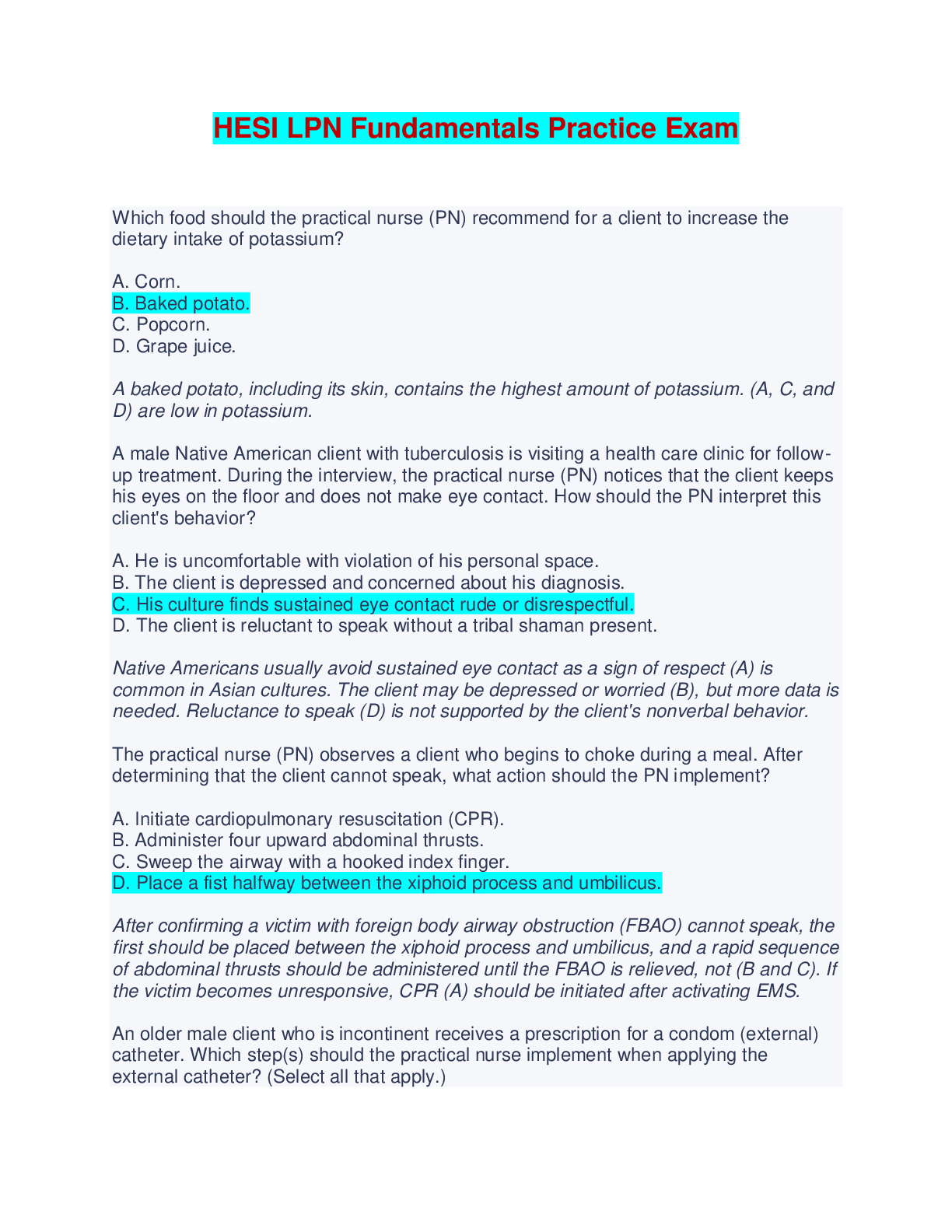
Reviews( 0 )
Document information
Connected school, study & course
About the document
Uploaded On
Oct 13, 2023
Number of pages
25
Written in
Additional information
This document has been written for:
Uploaded
Oct 13, 2023
Downloads
0
Views
19

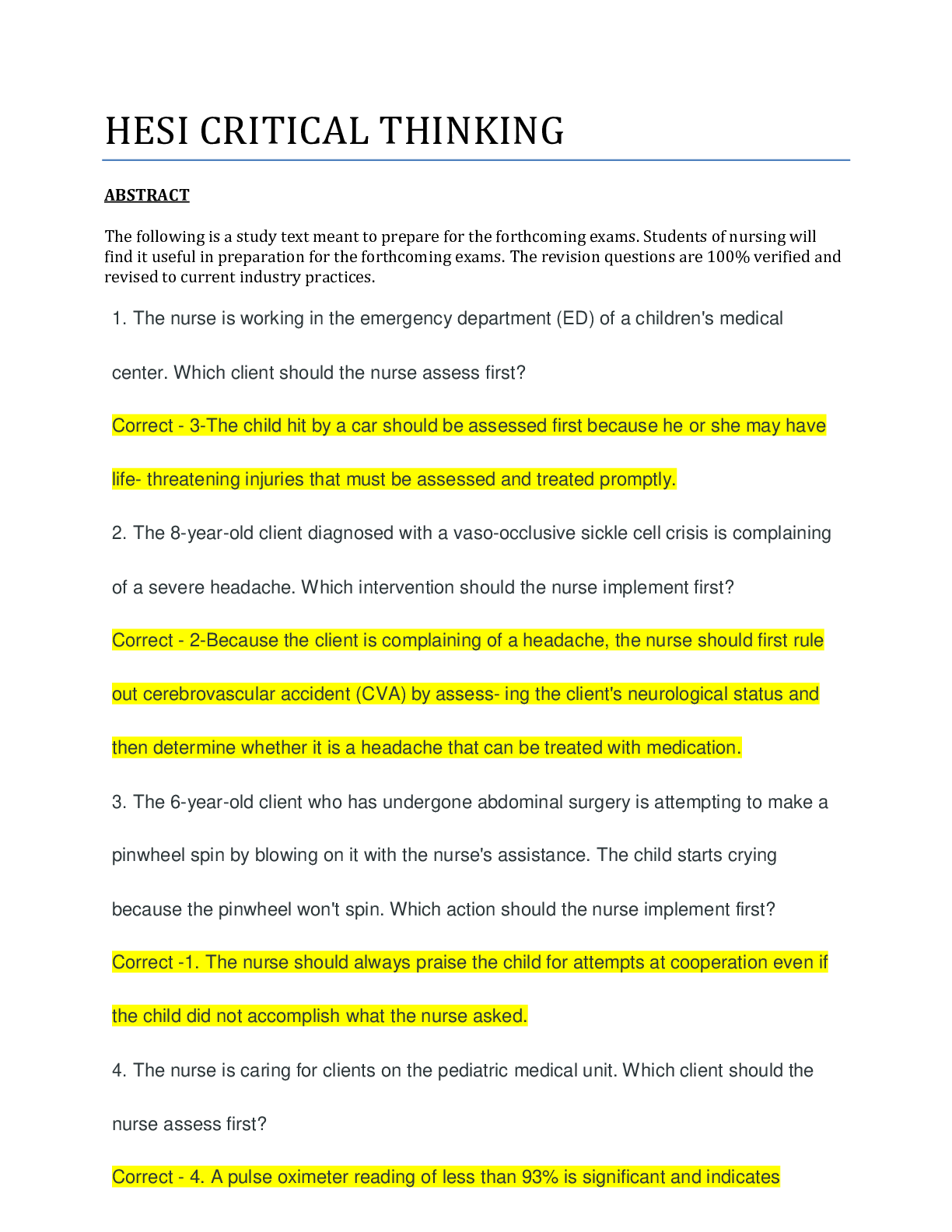

 V1 V2.png)

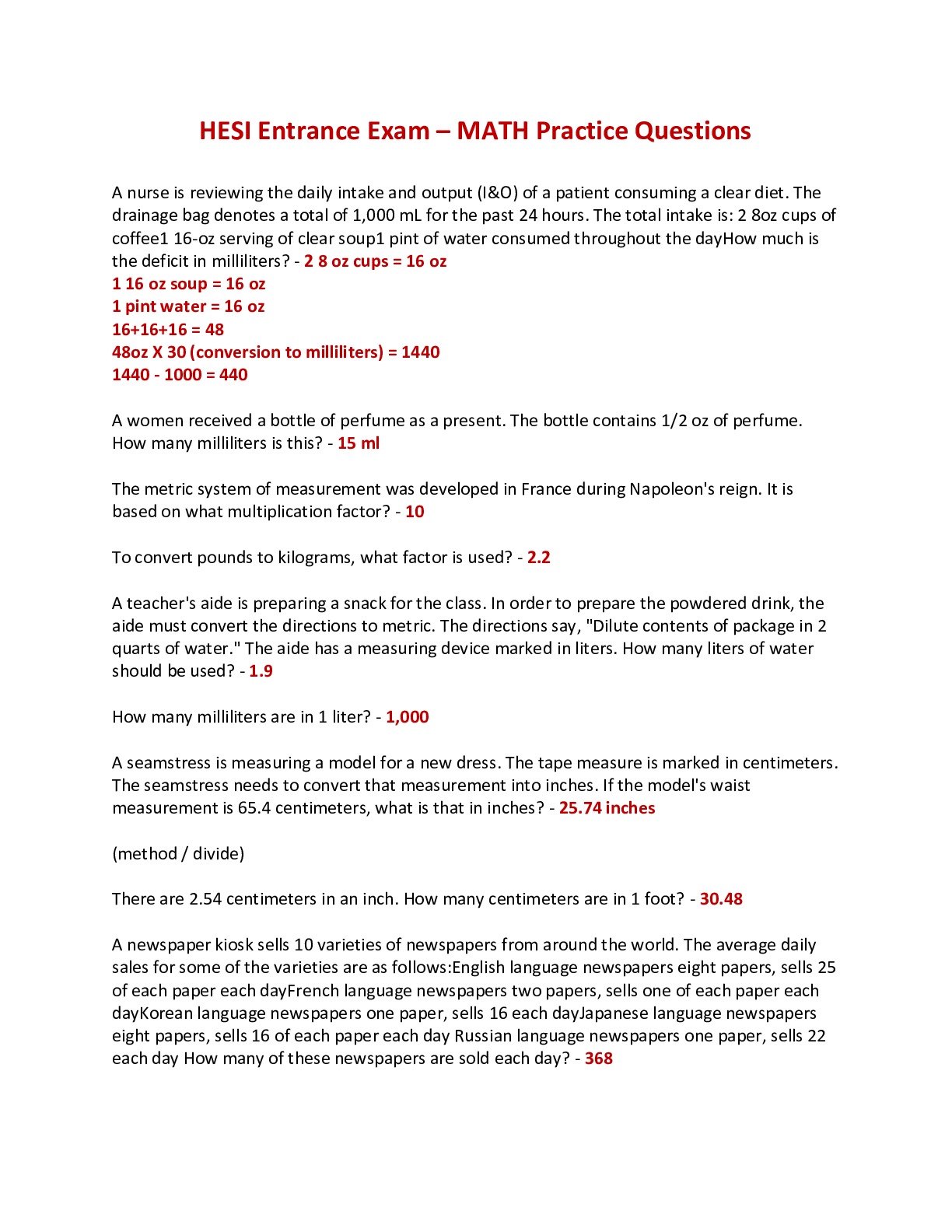
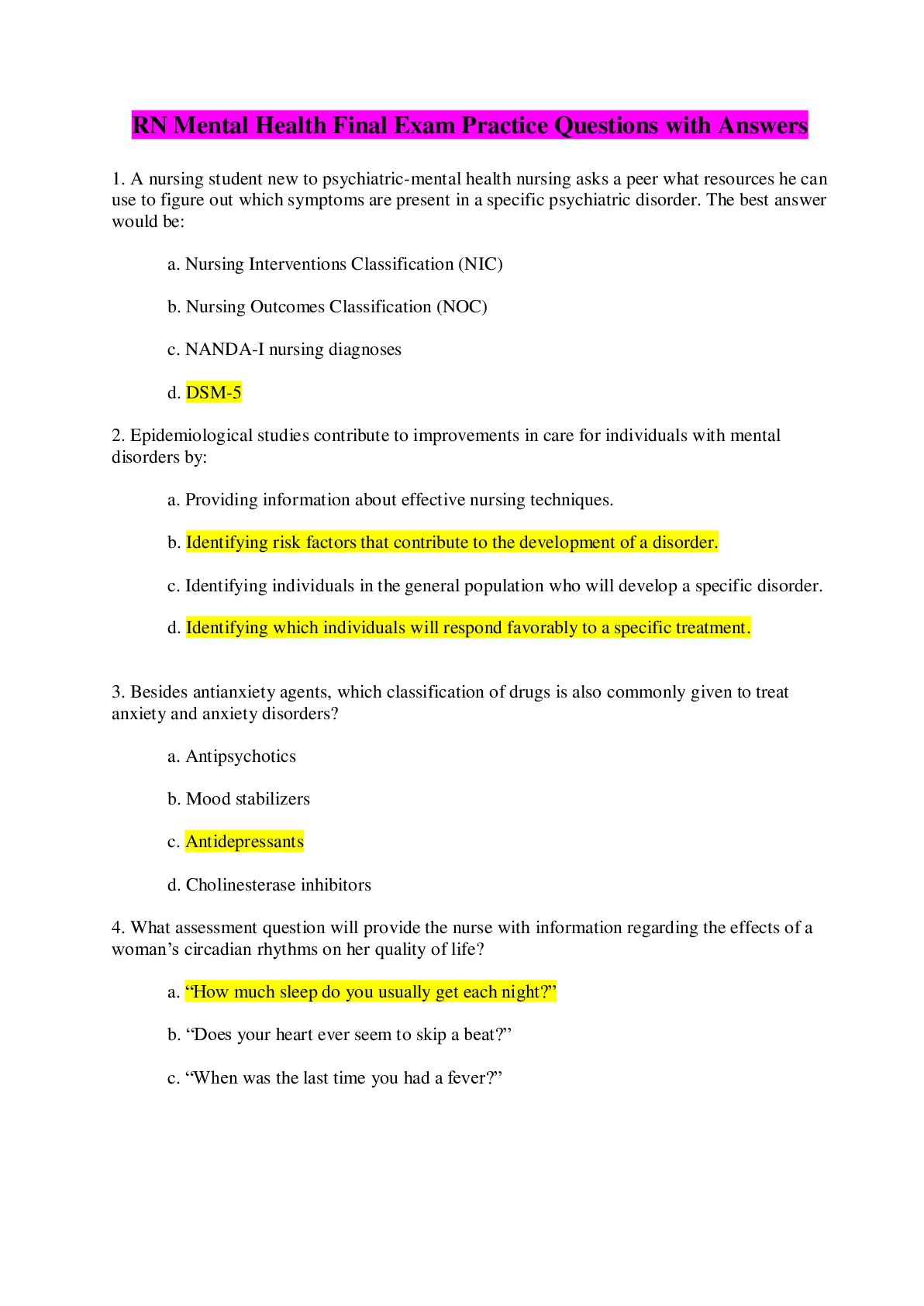
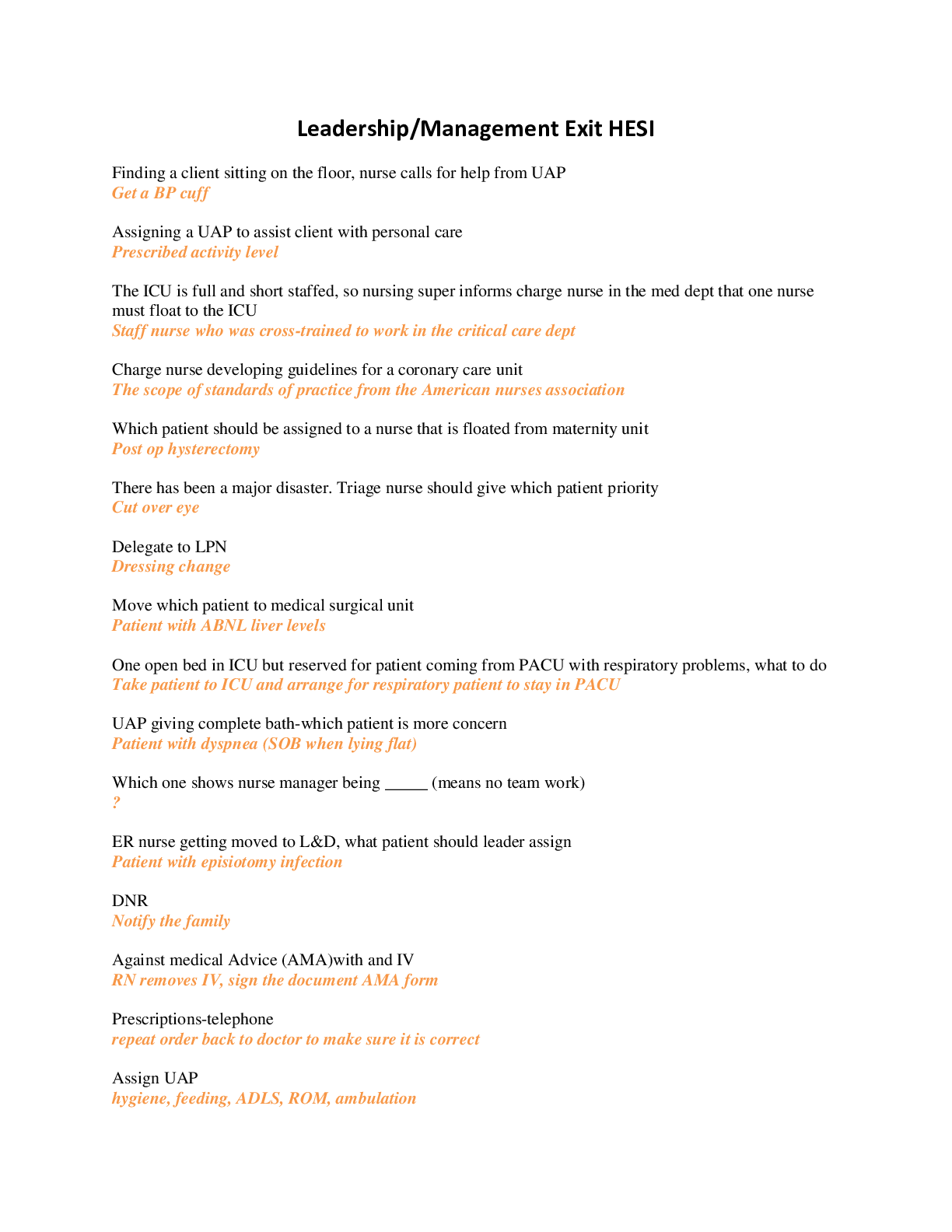
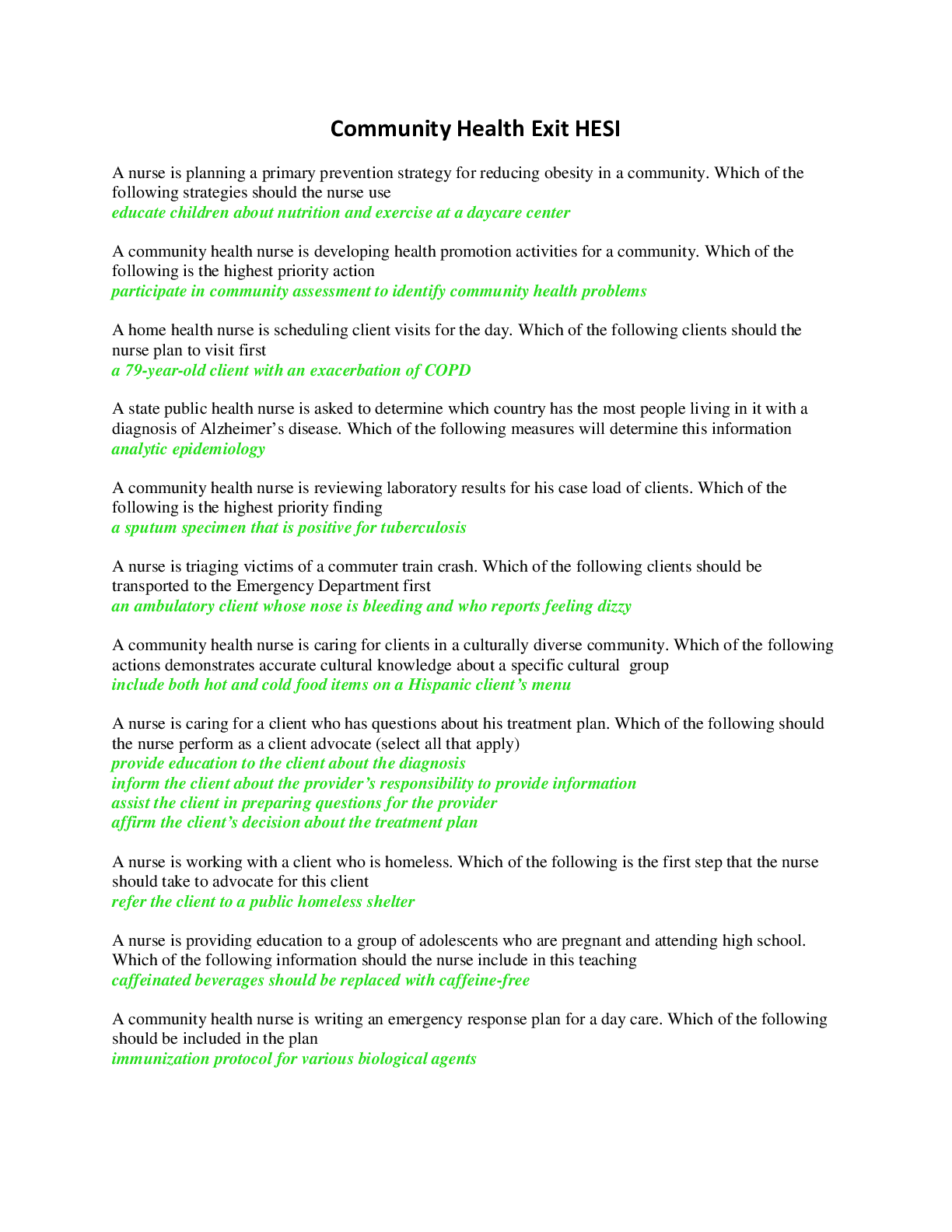
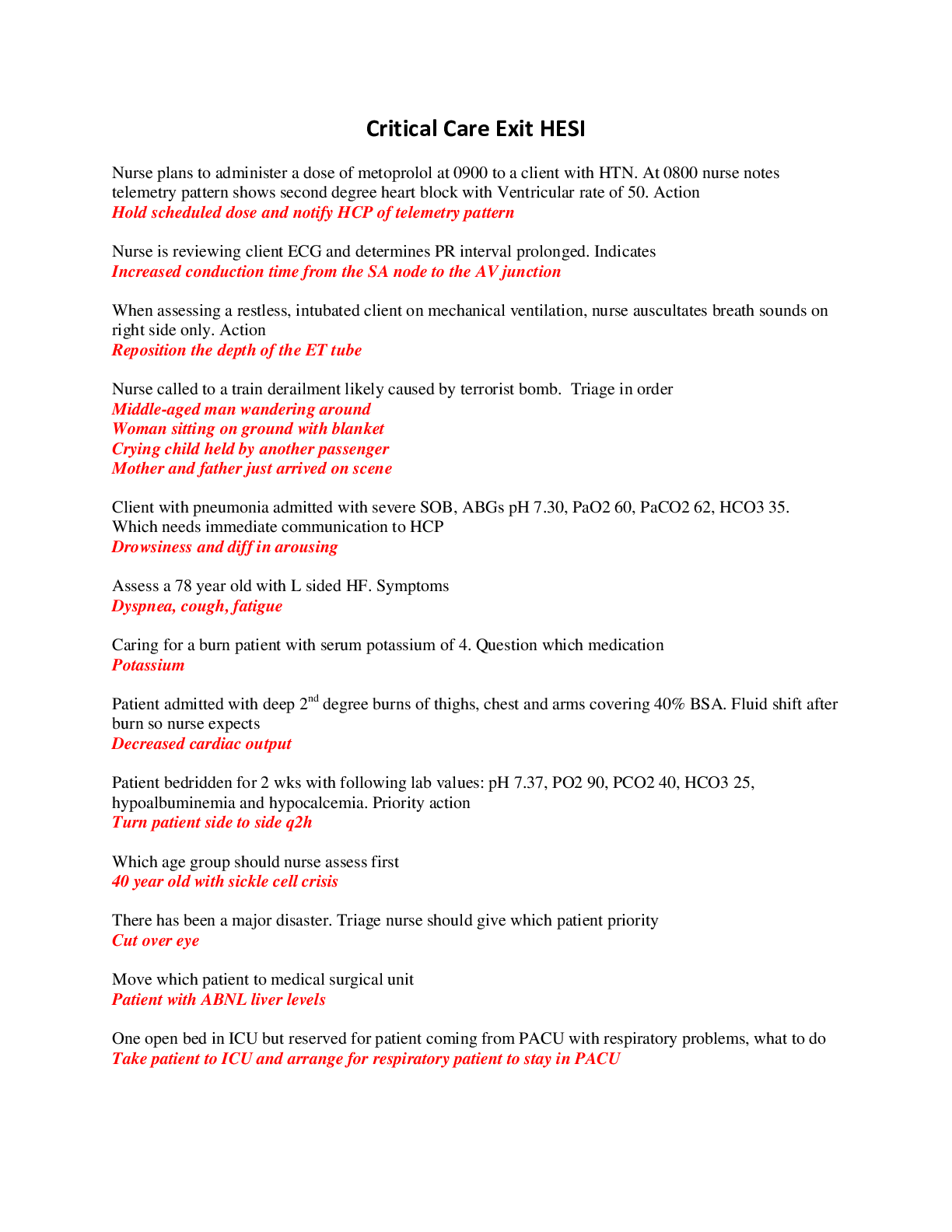
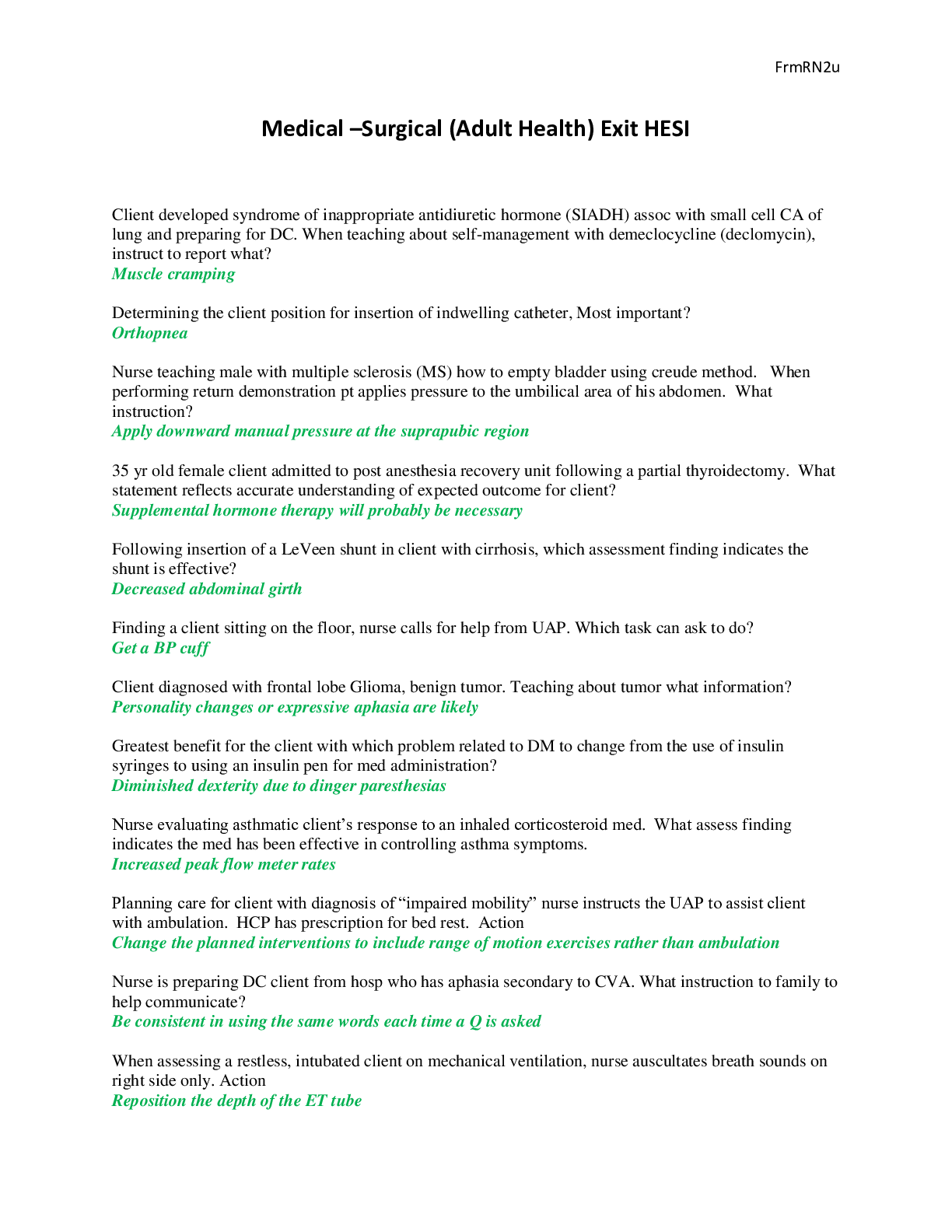
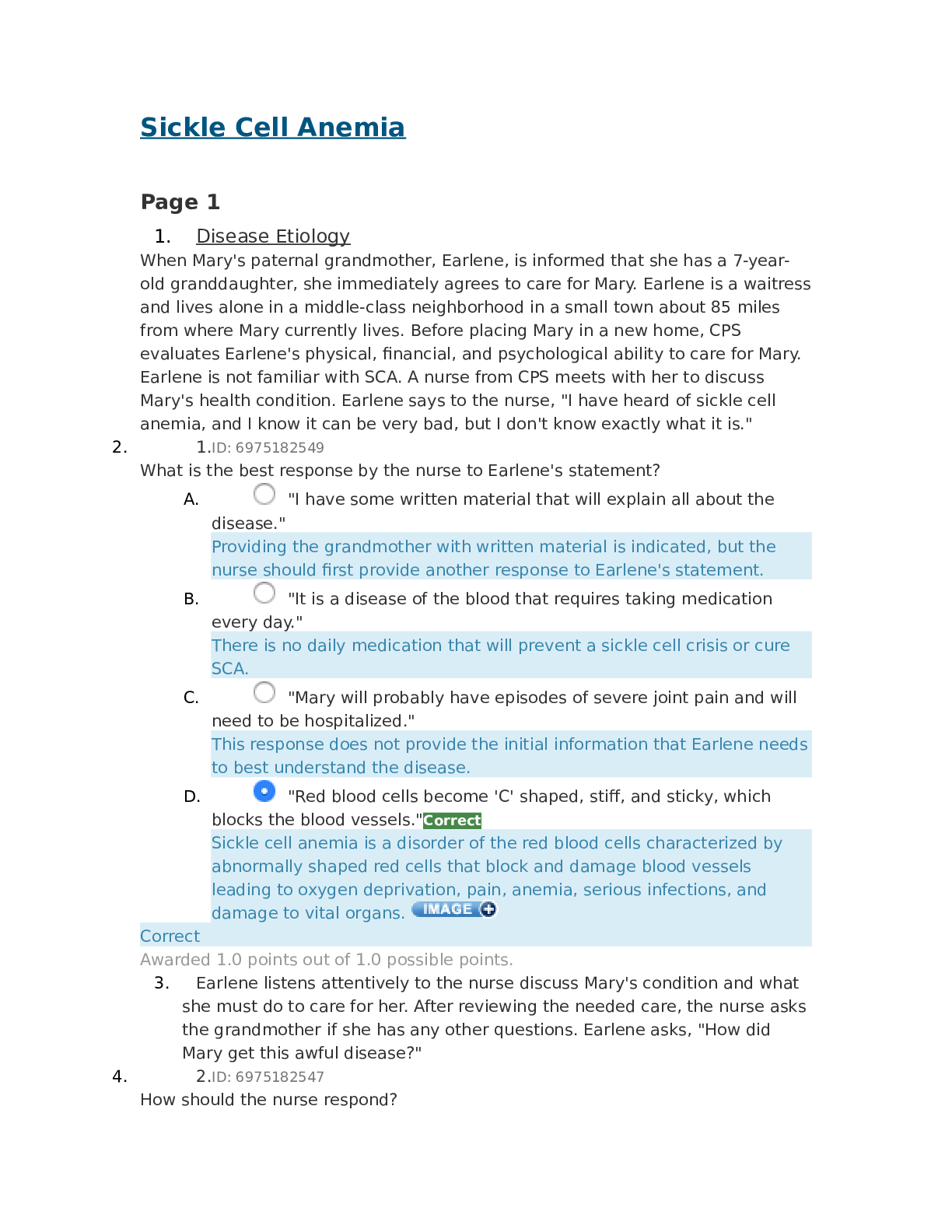
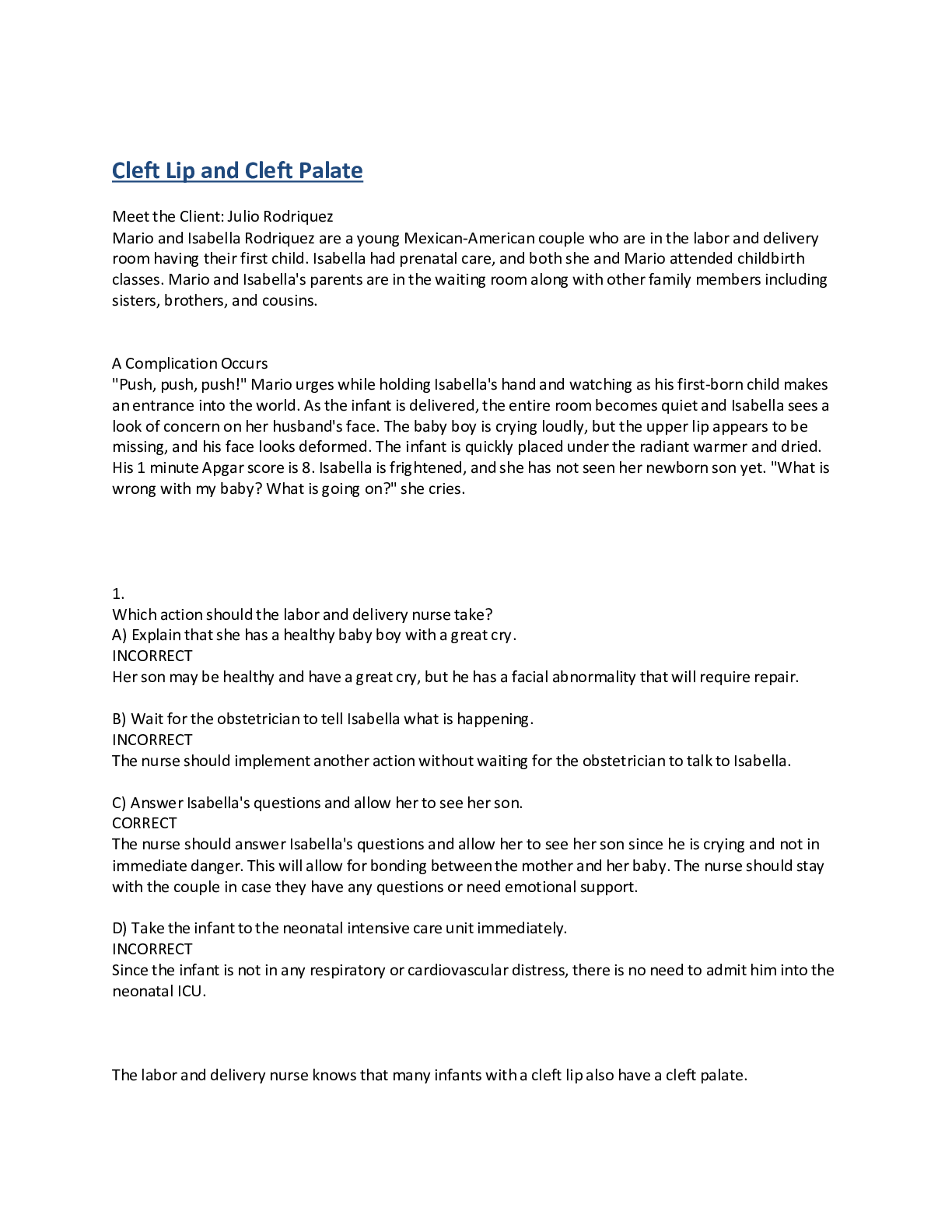
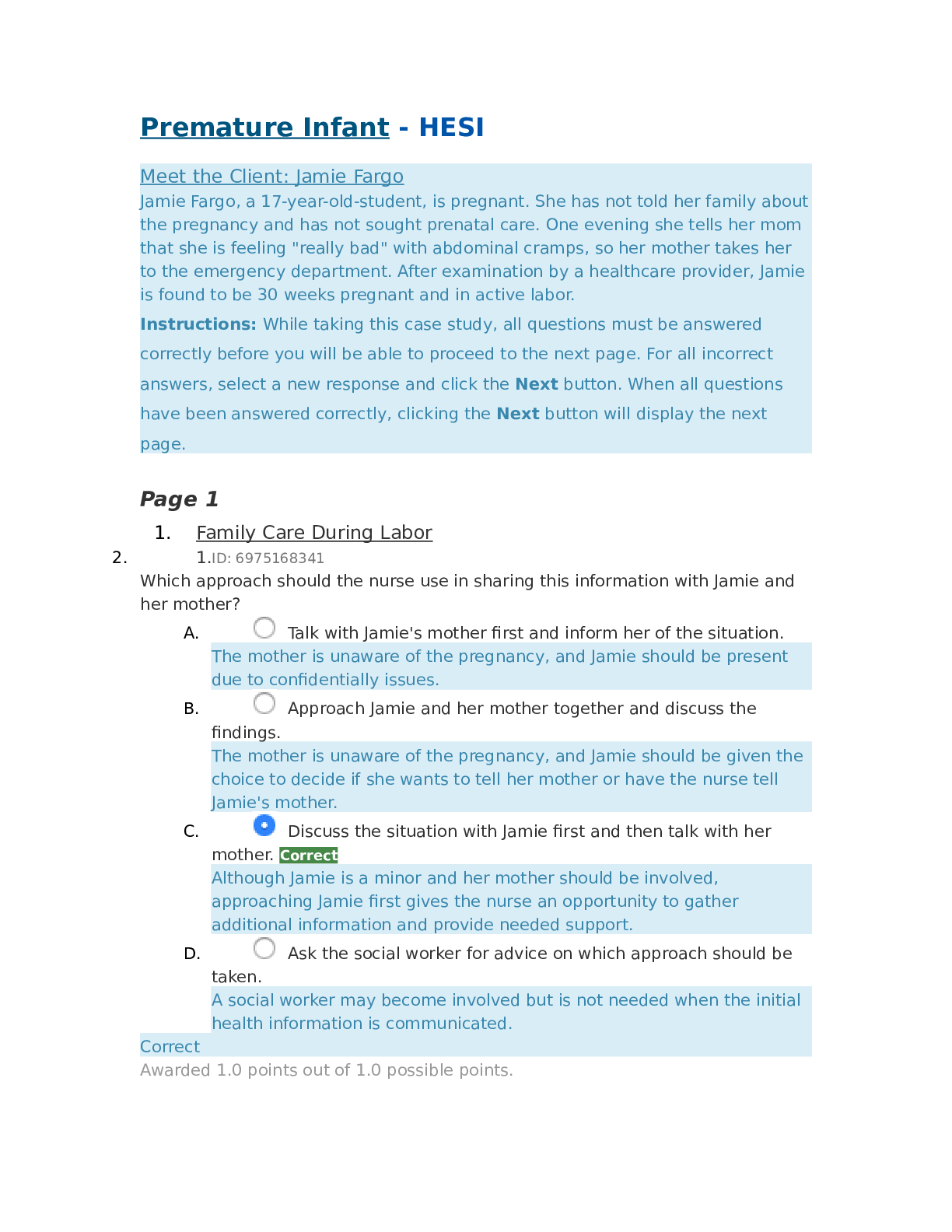
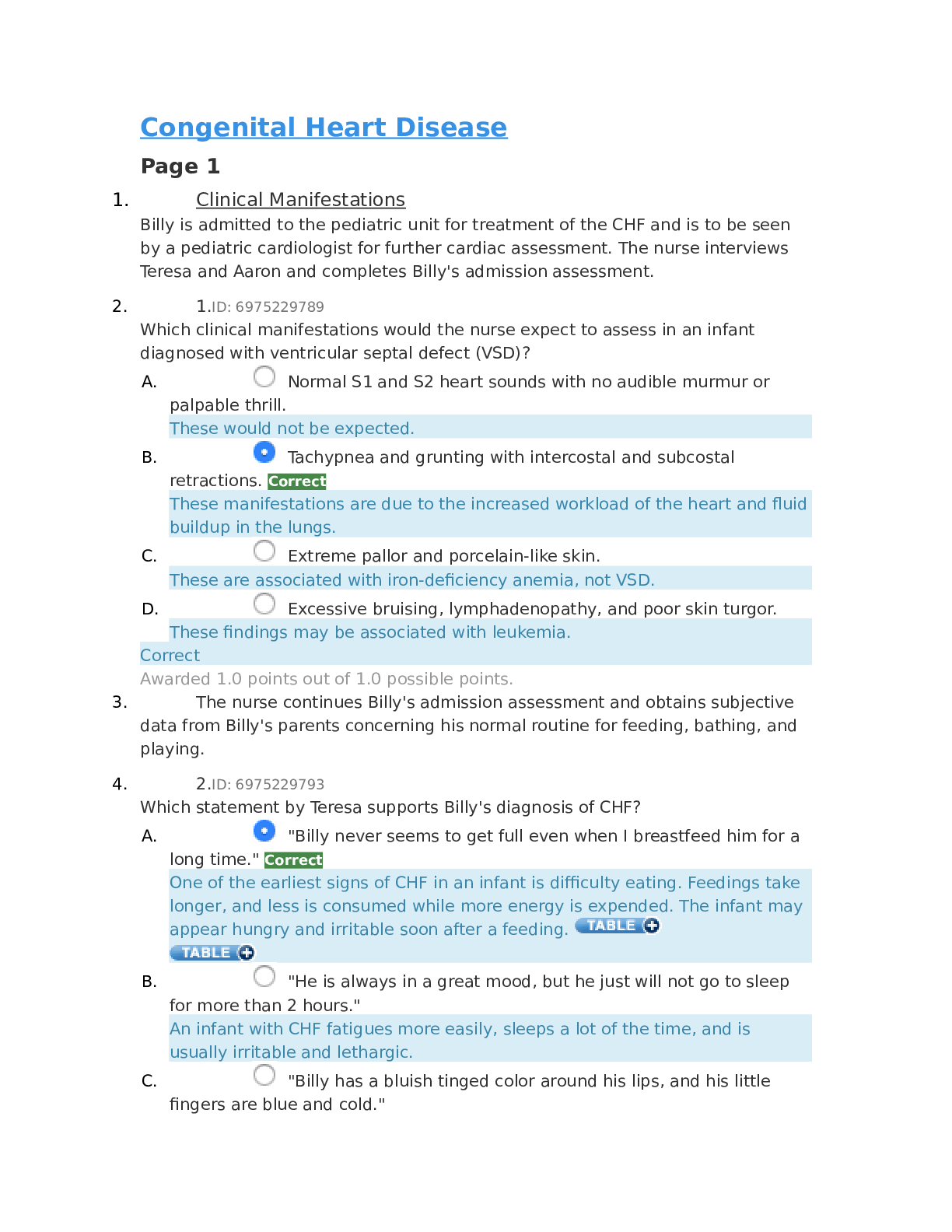
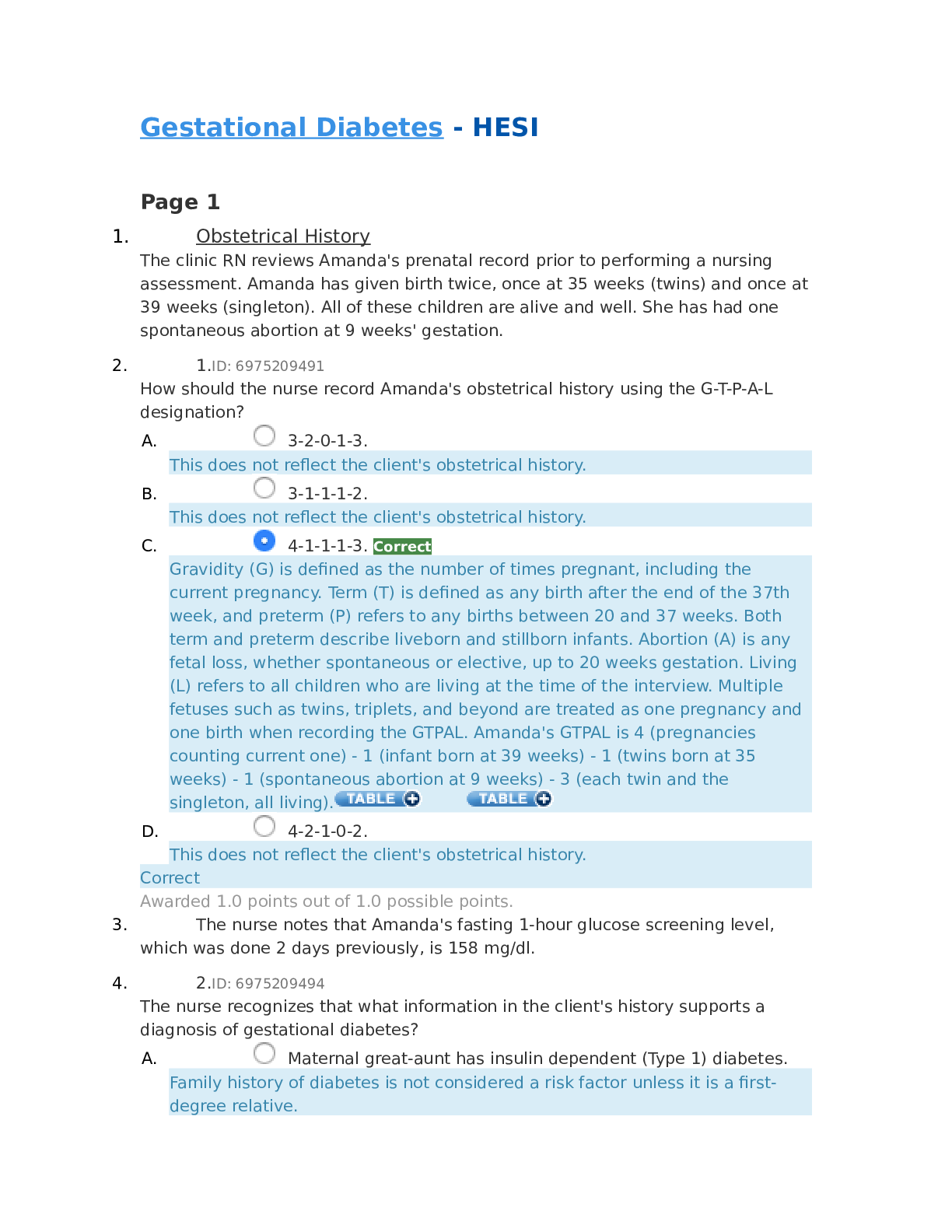
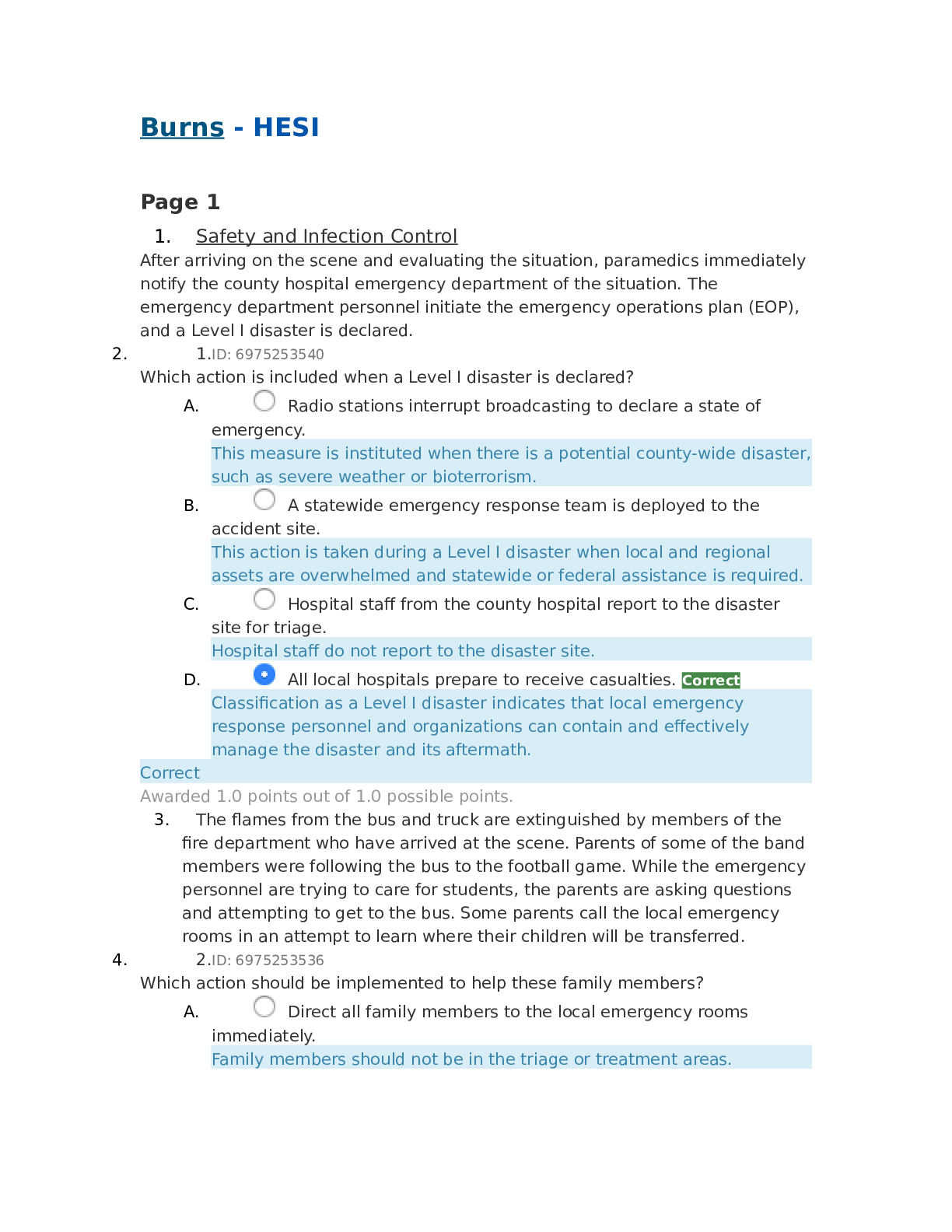
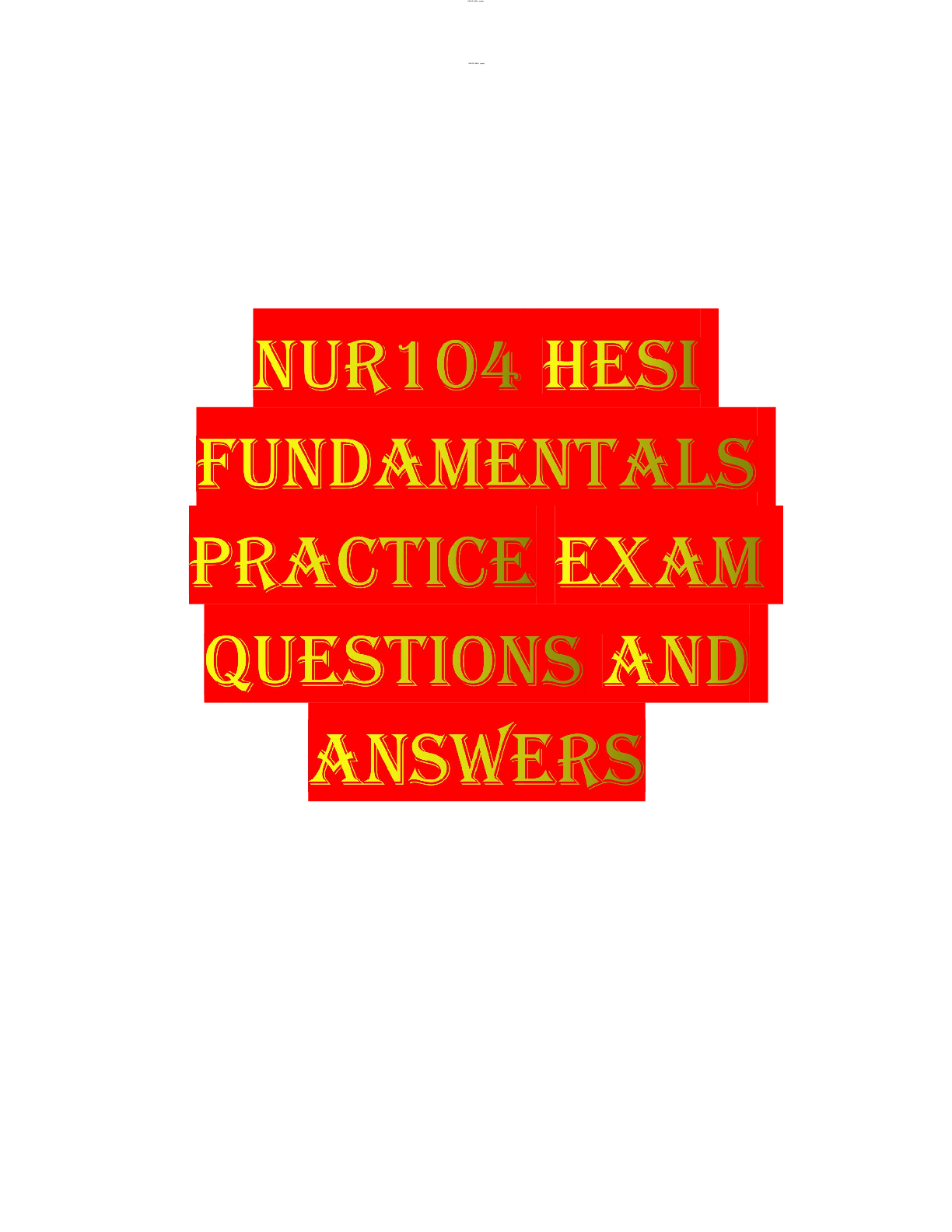
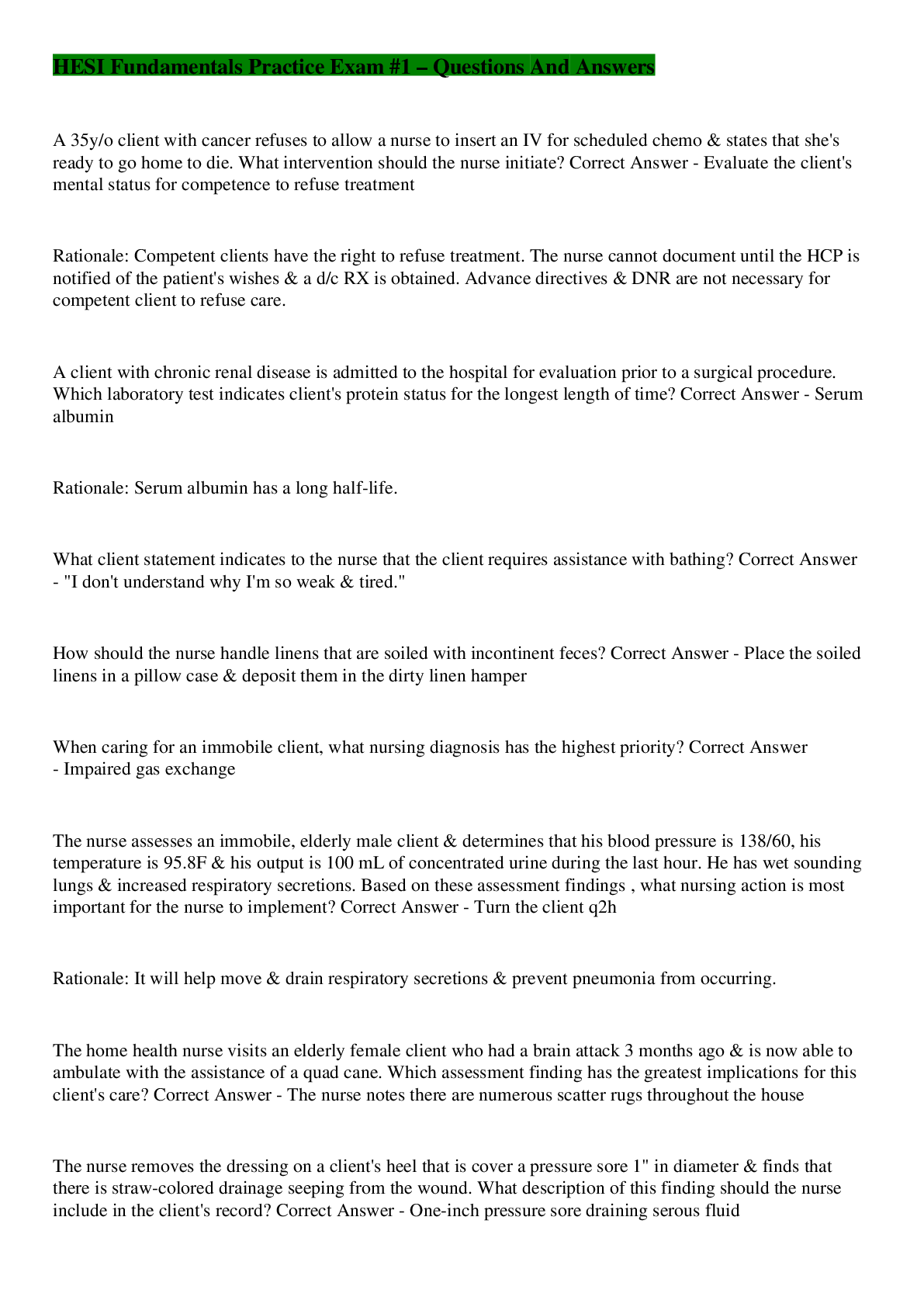

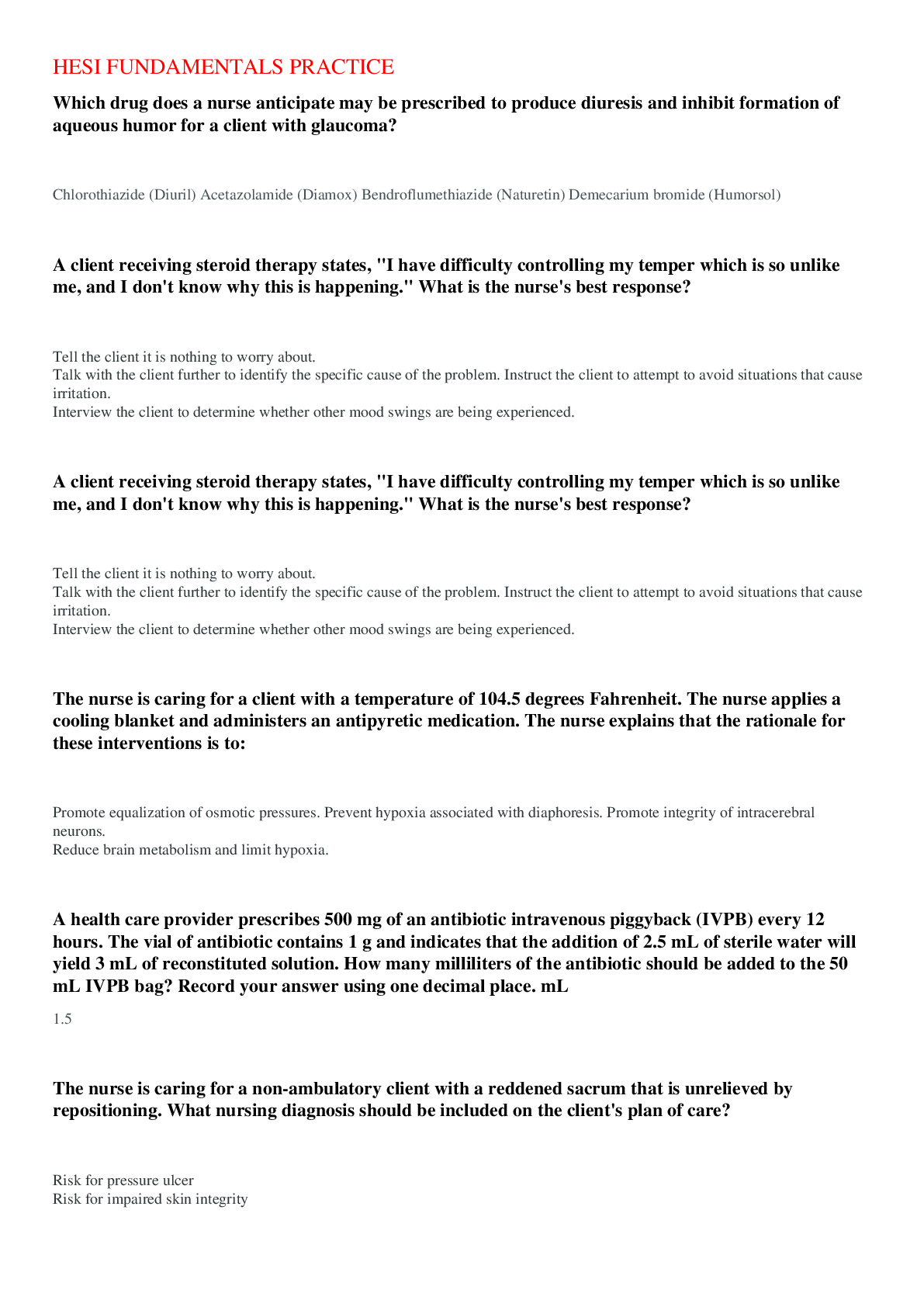
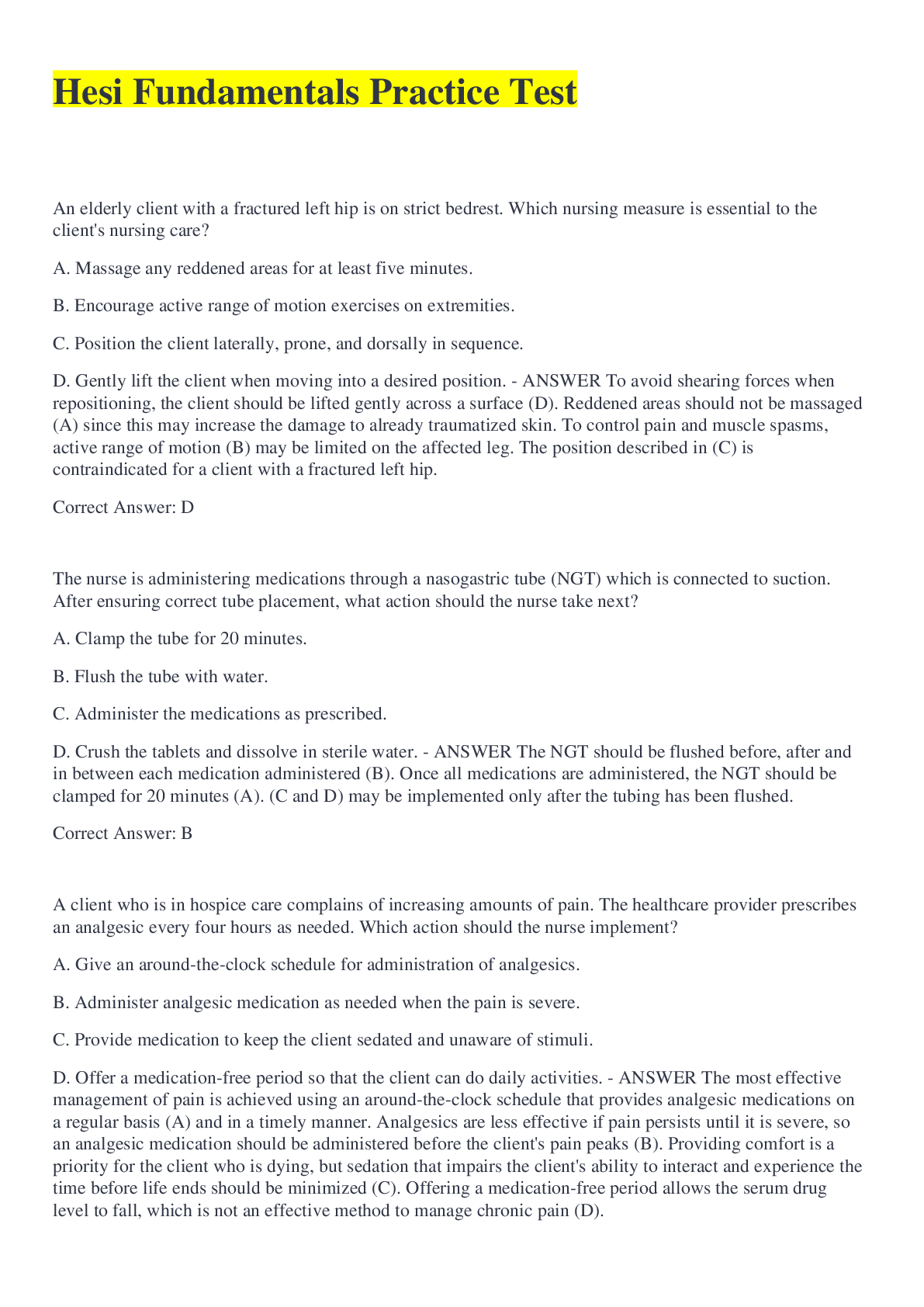








 (1).png)


